Paying homage to my hero
Searching for my great-grandfather's final resting place on Moel Famau mountain
Frank Griffiths died in 1996, four years before I was born. It pains me regularly that I never got to meet my great grandfather, but in truth it was a miracle he made it to 83.
His closest ‘brush with Reaper’s scythe’ (as Frank liked to say) came in August 1943. A pilot in 138 Squadron (Special Duties), Frank had been tasked with dropping vital war material to a French Resistance unit near Annecy in southeast France. But his Halifax bomber was brought down by small arms fire and crashed into a village.
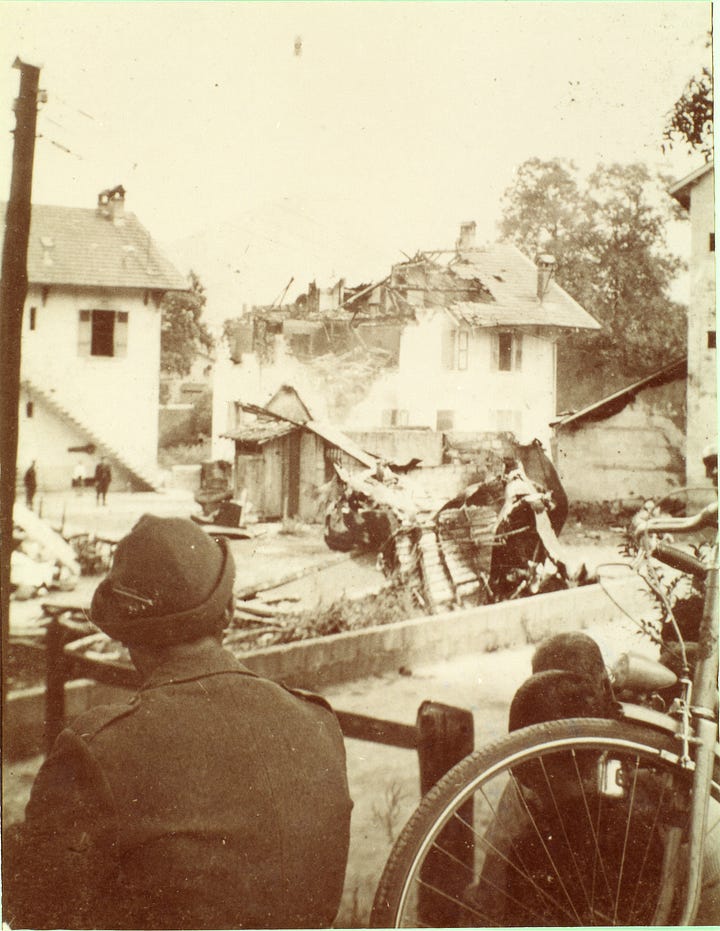
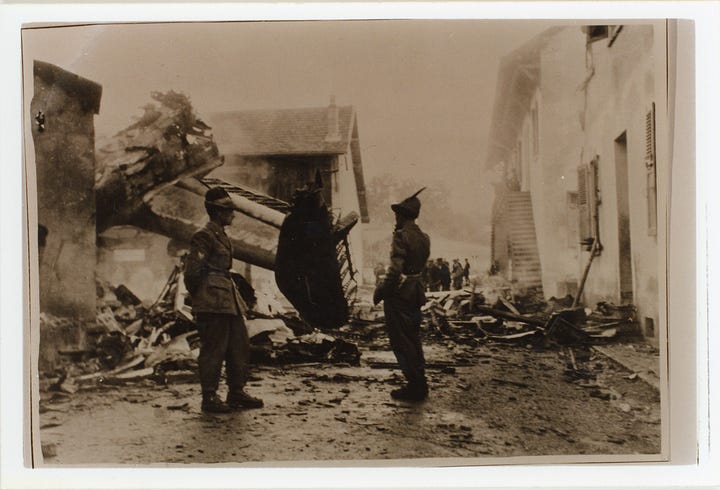


All six of Frank’s crew were killed, as well as five civilians, most of whom perished in a terrible fire. Frank was catapulted from his cockpit still attached to his seat into the night sky where, after travelling some distance, he collided with telephone wires which broke his fall and saved his life.
Wounded and alone, Frank spent the next 108 days escaping Nazi-occupied Europe, a journey of some 1,200 miles through France, Switzerland and Spain via a Frenchwoman’s chimney, the attic over a brothel and a Spanish prison cell. In 2022, I was lucky enough to retrace his escape across Europe, tracking down and meeting descendants of people who had risked their lives to shelter, feed, clothe and guide Frank back to Britain.
During these extraordinary encounters, French civilians- total strangers to me- shook my hand, put their hands on their hearts, hugged me and even cried in front of me. They told me their predecessors maintained for their whole lives it was their ‘greatest honour to help an RAF pilot during the war’. You would never have guessed we were talking about the events of 80 years ago.
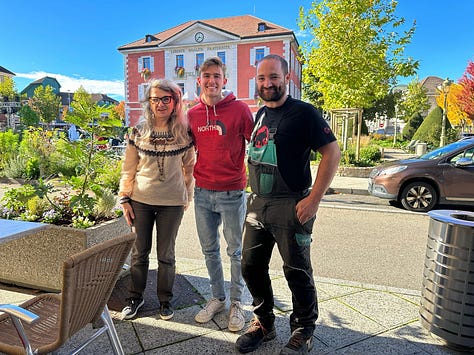

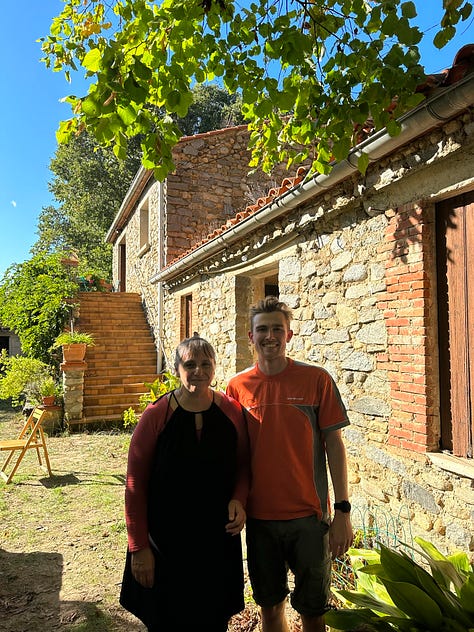
This, in part, was what inspired me to record my journey in full when I returned home, and to research and record as much of Frank’s life as possible, both of which are told in my first book Operation Pimento.
But, after hundreds of hours of research, I realised there was one place I had not visited, the spot where Frank’s ashes were spread almost 30 years ago.
At 554 metres, Moel Famau- the highest peak in a series of hills running from Prestatyn on the north Wales coast to Llandegla in eastern Denbighshire- holds a commanding view of the Dee Estuary, the Wirral, Vale of Clwyd and Eryri. I approach it from the village of Cilcain on foot, searching for what my family call the ‘bent trees’, Frank’s final resting place.
On empty lanes groaning with fox gloves, cow parsley and nettles, flanked by low stone walls and fields of sheep, I set off uphill in search of the bent trees. A gentle breeze stirs the leaves overhead, soft and sibilant, only broken by a great raven clattering away from his treetop perch, his wings slicing the wind.
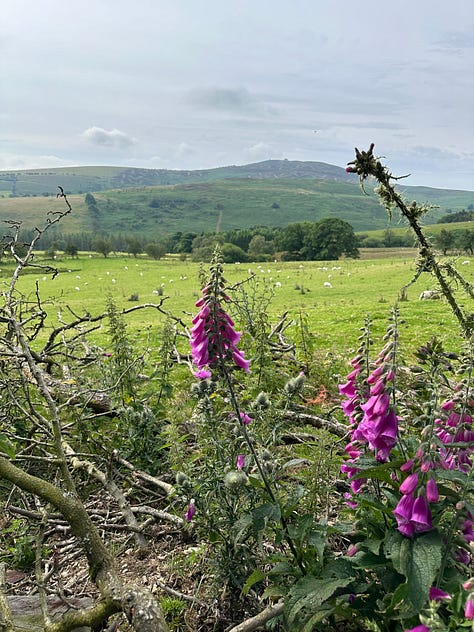


After an hour, the stony track curves southward and in a boggy, fern strewn corner of a field, I find the bent trees. A mighty black poplar, tipped over many years ago in a gale, unfurls towards Moel Famau. I climb over the barbed wire fence laden with sheep’s wool and enter the natural clearing between the poplar’s two main branches. Amongst the rushes, ferns and thistle, great sheathes of bark and splintered trunk lie from when the poplar fell.
Remarkably, the tree is still living. It’s thick, moss-covered branches twist outwards like witches’ fingers, running along the ground like roots before shooting upwards with abrupt enthusiasm. Against the odds, the tree has survived- just like Frank.
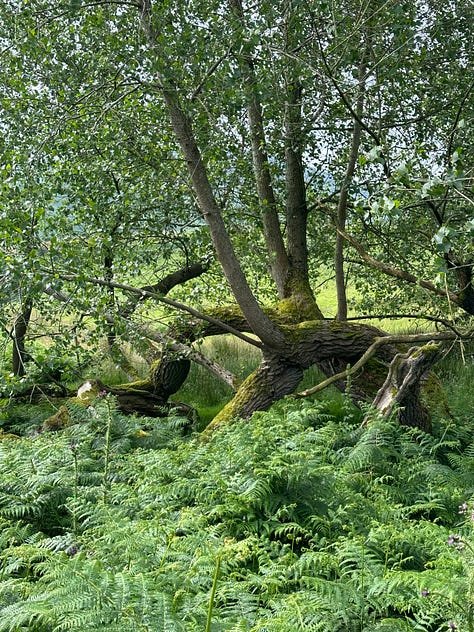
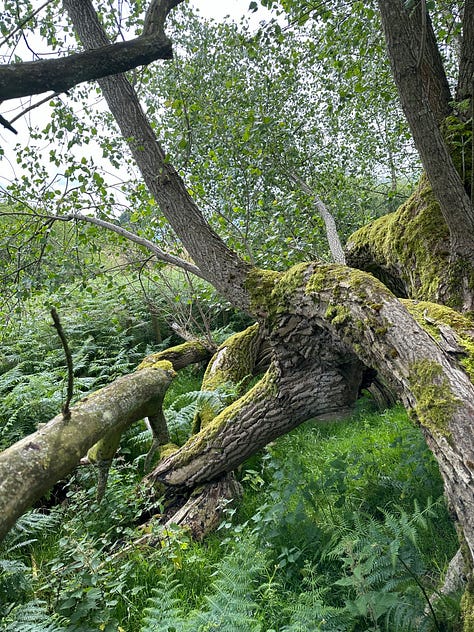
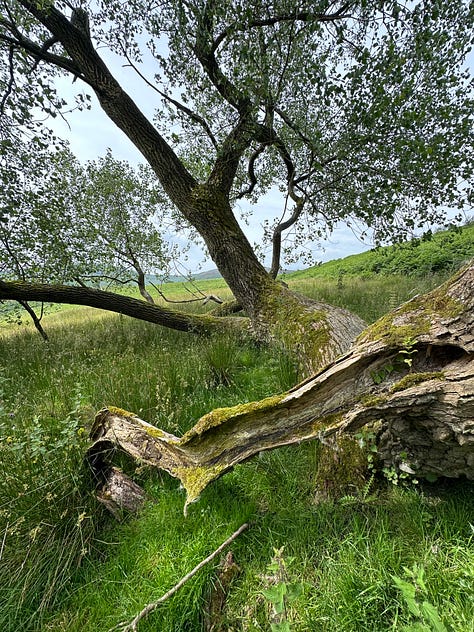
Just ten or so miles north, in the mouth of the mighty Dee Estuary, Frank experienced one of his earlier near-death experiences. It happened while trawling onboard his boat Olive alone when, forgetting to put his engine in neutral, he was knocked clean overboard by the boom.
He managed to grab the trawl rope as it was dragged past him and tried pulling himself back to the boat, but the full force of the propeller slipstream was like a millrace against him and his boots were dragging him down.
Olive had six hours of fuel and was heading for Dublin. Exhausted from clinging to the rope and being battered by waves, Frank was beginning to give up hope when, suddenly, he stood up. By some miracle Olive had grounded herself on a submerged sandbank where she was being drowned by the breaking surf.
“At last I got to her,” Frank recalled, “clambered over the side, knocked the engine into neutral, dropped the sail and took my boots off. I hauled up the net and to my surprise, it was filled with highly valuable ray! But I’d had enough fishing for one day.”

I explore the clearing, nettles stinging my legs and wet earth squelching below my trainers. I run my hand along the poplar’s branches, pressing my fingertips into the bark- inches deep in places- before saying a few words to Frank. It feels natural, talking aloud to no one, and I talk to him as a friend. Pigeons coo in the distance and a pheasant clucks. The wind is increasing. Weather is on the way.
I turn to face southwest where the mountains of Eryri loom moodily, darkened by cloud shadows. Here, in April 1943, Frank flew a fully loaded Halifax to a remote valley to parachute a mangle (a heavy Victorian contraption for squeezing water out of clothes) to his aunt.
Frank’s navigator John Charrott remembered: “We set off up one side of the valley, the mountains rising above us just away from the wing tip, the end of the valley approaching fast… no way are we going to pull up over that… but suddenly the Halifax is tipped violently on its wing, and we seem to scrape the hillside and tear down the other side over Auntie's garden.
“Red light- green light- and the dispatcher pushes the mangle out. We come out safely, climb rapidly to 2,000 feet and watch the parcel drift gently down, landing safely in Auntie's garden.
“Great,” said Frank, “now when we get back, enter this in your logbooks as an air test!”
I sit on the flattest section of trunk and watch. Between the outer branches, Moel Famau is visible, a patchwork of burnt heather guarded by an Iron Age hill fort. It is a sight Frank spent much of his life enjoying as he was born on the Wirral, educated in Mostyn, and retired to Ruthin. The mountain was a focal point of his life.
I leave the bent trees and scale the steep final push to the summit, partridges bursting from the heather and stone chats calling warily. At the summit, staring north straight into the Irish Sea, I picture another of Frank’s daredevil stunts.

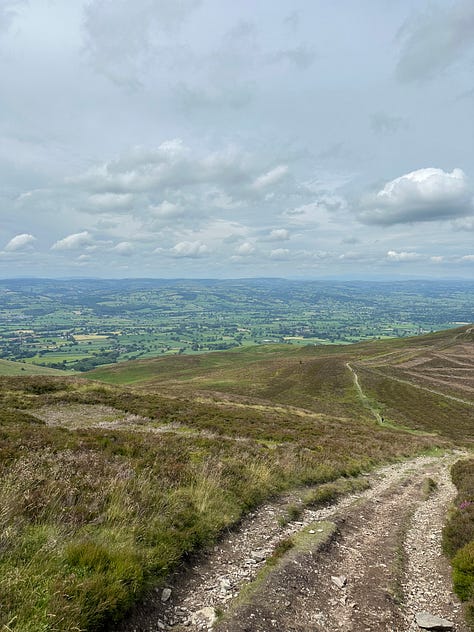
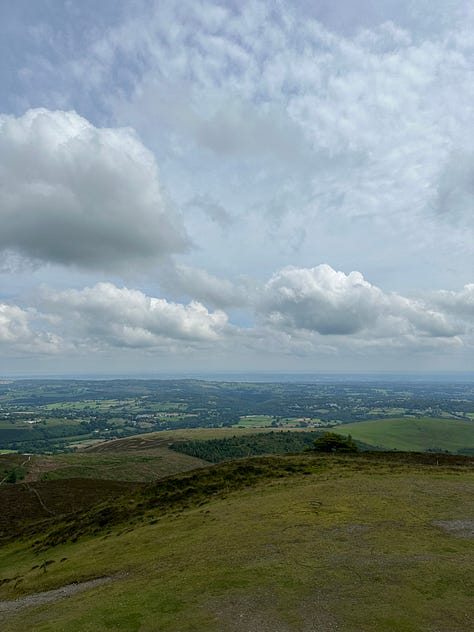
Flying a Walrus seaplane in tandem with a submarine, Frank had been invited below deck after the final days’ testing when disaster struck. Emerging from the boozy lunch, he was disturbed to find a strong wind had blown up and the previously flat sea was now a rolling swell.
Rather than be towed, Frank asked the submarine commander to steam his submarine into the wind and ‘bash the seas flat’. He would then chase behind and use its slick to get airborne.
“I throttled after the sub,” Frank remembered, “but could see only water cascading over the top of the fuselage and hissing through all the slits of the cockpit hatch. We roared over the crest of the first swell where I could see the submarine- unpleasantly close. At the bottom of the next swell the sub vanished, but at the top of following one we were airborne!”
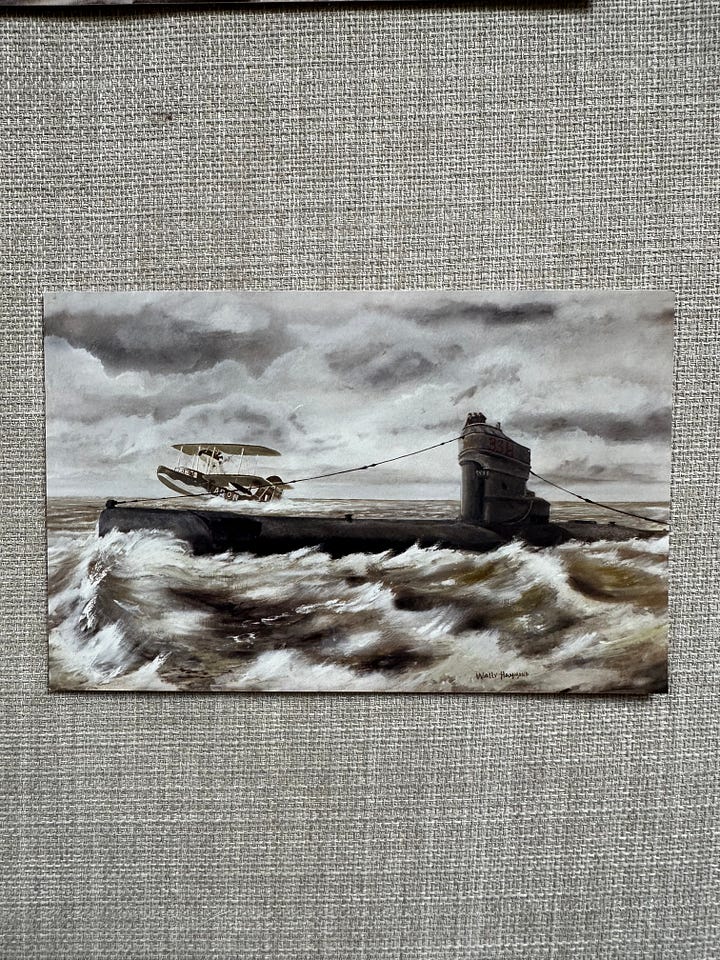

I can hear two topless Liverpudlians singing ten German bombers approaching. It’s time to go. I take in one last sweeping vista of north Wales, a deep breath of Irish Sea wind and retreat from the summit, disappearing south into secluded fold of countryside with just partridges and dragonflys for company, no map and no phone battery- just how Frank would have liked it.




